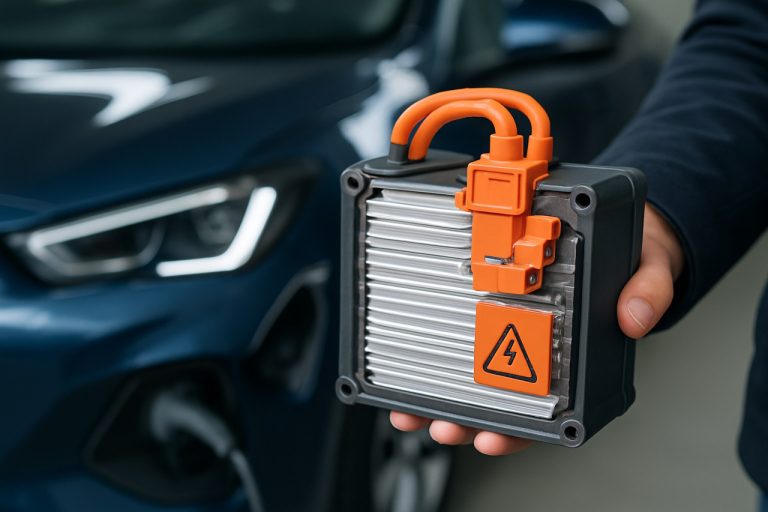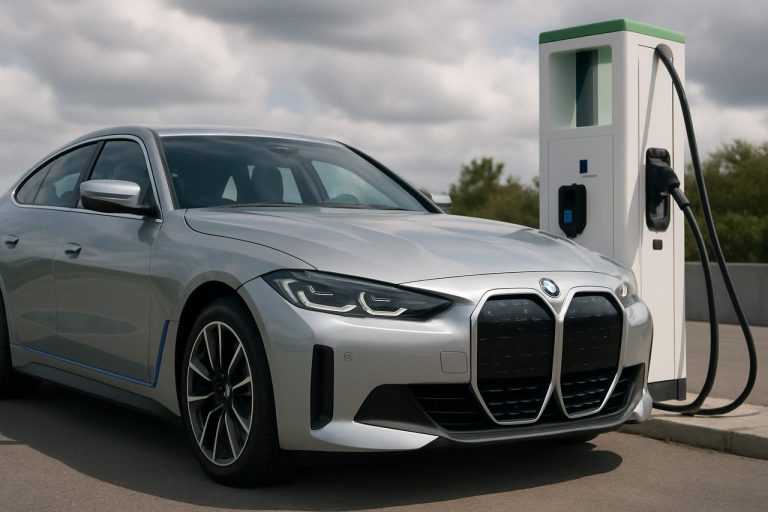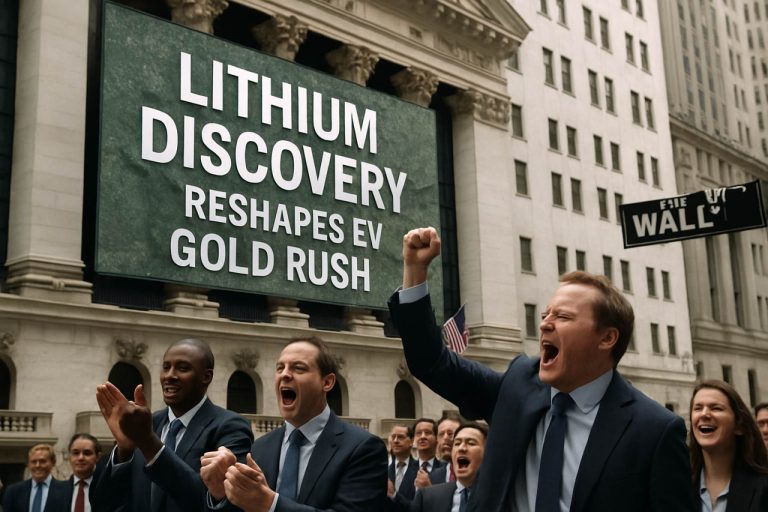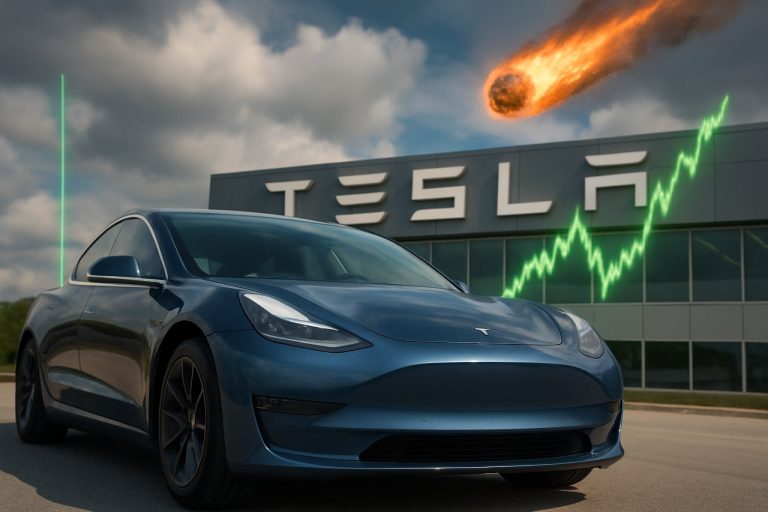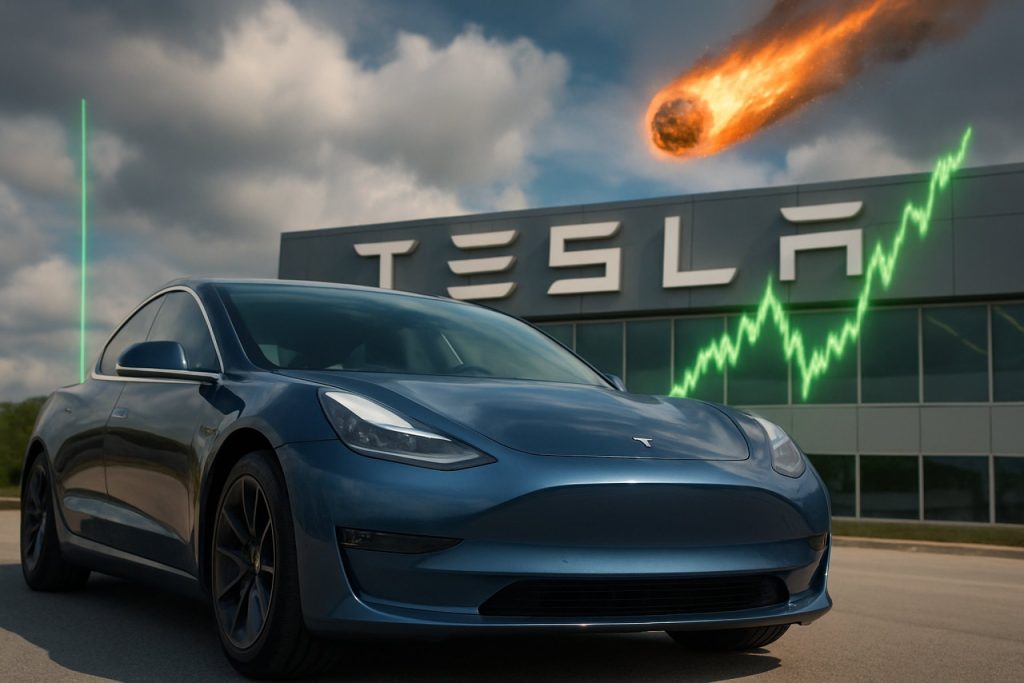
- Tesla stock surged 57% in May, showcasing renewed investor confidence and interest in electric vehicles.
- Focus on self-driving technology intensified with plans for an Austin-based robotaxi fleet launching in June.
- Elon Musk shifted attention away from politics, revitalizing both investor and customer enthusiasm.
- China’s temporary tariff rollback to 10% opens key growth opportunities for Tesla’s global expansion.
- Price cuts on models like the Model Y and a growing used EV market are making clean mobility more affordable.
- Switching to Teslas and electric vehicles lowers emissions, benefiting public health and the environment.
- Home solar panel adoption lets owners power EVs off-grid, offering significant financial and environmental gains.
Once battered by volatility and controversy, Tesla’s stock has erupted with new energy this May, electrifying Wall Street and reigniting hopes for the future of electric driving. In one breathtaking month, Tesla shares have soared an astonishing 57 percent, vaulting from April’s trough of $218.80 to $342.82 by mid-May. This rally not only signals renewed investor faith but may also spark profound transformations for consumers and the clean energy landscape.
The sudden ascent isn’t some fluke. Investors have sharpened their gaze on Tesla’s deepening commitment to self-driving technology. Just weeks ago, the company made waves with plans to launch a robotaxi fleet in Austin, Texas, a bold experiment rolling out in June that could forever alter the way Americans hail a ride. With rivals still grappling with pilot programs, Tesla’s rapid push toward autonomous mobility attracts tech enthusiasts and Wall Street alike, raising the stakes for competitors.
Crucially, CEO Elon Musk has promised to pivot away from the political fray that embroiled both his reputation and the brand’s sales last year. Stakeholders seemed to breathe a collective sigh of relief as Musk redirected his focus to Tesla’s core mission. This shift in leadership has smoothed some edges, tempting back disillusioned investors and stirring renewed energy among Tesla’s fervent customers.
Meanwhile, on the global stage, Tesla is capitalizing on a dramatic tariff rollback with China. For a 90-day window, tariffs on U.S.-China electric vehicle imports stand at a friendly 10%, compared to the punitive rates of months past. This shift opens lucrative channels for cross-border commerce and reassures shareholders that the company’s global ambitions remain alive and well, unfettered by trade headwinds.
Every financial surge tells a story beyond the charts. As Tesla’s valuation climbs, it signals to the market that confidence in clean energy innovation is not just alive—it’s roaring back. Customers, in turn, have reason to celebrate. In response to softer sales, Tesla swiftly slashed prices on models such as the Model Y, putting electric dreams within reach for more households. This move comes at a moment when EVs are becoming mainstream, and the growing marketplace for used EVs is driving costs down further, democratizing access to clean mobility.
Behind each vehicle lies the promise of cleaner cities. Swapping gas guzzlers for Teslas means fewer noxious pollutants vented into the air. These transformative shifts support better public health and reduce the global carbon footprint, fueling hope in the face of climate anxiety.
Driving the financial and environmental upside can go further. Homeowners outfitting their roofs with solar panels can harness the sun itself—making it possible to power their cars independently of the grid. Solar savings can rival even the steepest incentives, turning homes into miniature power stations and putting thousands of dollars back in owners’ pockets. Resources like EnergySage simplify the journey, matching consumers with the best quotes and unlocking serious savings.
The story of Tesla’s comeback is more than just numbers on a screen—it’s a signal that the age of electric vehicles is accelerating, benefiting both bank accounts and the blue planet. As investor optimism returns, the path toward a cleaner, more affordable commute becomes clearer than ever. For anyone still debating the EV leap, the latest surge in Tesla’s fortunes may be just the spark needed to charge ahead.
For more on sustainable tech and innovations shaping our world, visit Tesla and EnergySage.
Tesla’s Meteoric May: What Investors and Consumers Need to Know (and Do) Right Now!
Tesla’s 2024 Stock Surge: Deeper Insights, Life Hacks, and Future-Focused Analysis
Tesla’s stunning 57% share surge in May has done more than just excite Wall Street. The company’s rapid turnaround is sparking new interest in electric vehicles (EVs), clean energy, and advanced autonomous technology. But there’s more to the story than headlines suggest. Let’s dive into the hidden facts, critical questions, and actionable tips that every consumer and investor should know.
—
Additional Tesla Facts and Industry Insights
1. Tesla’s Self-Driving Tech Approaches Level 4 Autonomy
While many automakers are stuck at Level 2 or 3, Tesla’s Full Self-Driving (FSD) Beta aims for Level 4 features—meaning vehicles can handle most driving scenarios without human intervention. Tesla’s aggressive data collection (over 1 billion autonomous miles logged) gives it a considerable edge ([source](https://www.tesla.com)).
2. Robotaxi Economics Could Disrupt Rideshare Giants
Tesla’s planned Austin robotaxi launch is poised to radically undercut Uber and Lyft. According to Musk, robotaxis could drop per-mile costs to under $0.18/mile—up to 70% less than traditional rideshare rates. If Tesla scales the fleet, expect significant pricing pressure in urban transport.
3. Tesla’s EV Market Share Remains Dominant—For Now
In the US, Tesla holds over 50% of the EV market (Cox Automotive, 2023). However, rivals like Ford, GM, and newcomers like Rivian and Lucid are ramping up production. Internationally, BYD and Nio in China pose serious competition as tariffs fall.
4. Price Slashes—A Strategic Move
Tesla’s recent price cuts on the Model Y and other models were not just about driving sales—some analysts argue it’s a bid to pressure competitors on margins, using Tesla’s manufacturing efficiencies to full advantage ([source](https://www.tesla.com)).
5. The Used EV Market: Hidden Bargains
With higher production and more models available, the US used EV market has exploded. Savvy shoppers can find three-year-old Teslas for 30-40% less than new, thanks to incentives and improving battery longevity.
—
Key Features, Specs, and Pricing
– Model Y: Starting under $43,000 after recent price cuts; ~330 mile range
– Model 3 Refreshed: New design, improved range, starting ~$39,000
– FSD Software: Current cost is $12,000 upfront; monthly subscriptions available
– Solar Roof + Powerwall: Bundled installations can save $10,000+ over a decade ([source](https://www.energysage.com))
—
Pressing Questions Answered
Q: Is Tesla’s stock rally sustainable?
Many analysts say the surge was driven by a combination of record software interest, China tariff relief, and new product announcements. However, risks include rising competition, market corrections, and regulatory scrutiny over FSD.
Q: How safe is Tesla’s Autopilot/FSD right now?
NHTSA and international watchdogs have probed Tesla’s safety records. While the data show fewer accidents per mile with Autopilot engaged, critics warn of over-reliance and rare but high-profile crashes. Tesla drivers must stay attentive.
Q: Are EVs really greener, considering battery production?
Studies (e.g., International Energy Agency) confirm that, over their lifecycle, Teslas emit up to 60% less CO2 than equivalent gas cars, even accounting for battery production. Solar charging amplifies these savings.
—
Market Forecasts and Industry Trends
– EV Adoption to Double by 2026: BloombergNEF predicts global EV sales will reach 30% market share by 2026.
– Battery Tech Advancements: Tesla is investing in 4680 battery cells, promising higher range, faster charging, and lower costs.
– Grid Integration: Tesla’s Powerwall and Supercharger V4 stations support bi-directional charging and grid support in pilot regions.
—
Tesla vs. The Competition: Quick Review
| Feature | Tesla | GM/Ford | Rivian/Lucid | BYD (China) |
|——————–|——————-|——————-|——————|—————–|
| Autonomy | Leading FSD Beta | Lags, Level 2-3 | Early Stage | Level 2 |
| Range (avg) | 300+ mi | 250-300 mi | 300+ mi (high-end)| 250+ mi |
| Superchargers | 26,000+ globally | Limited | Limited | Expanding (China)|
| Price Flexibility | Frequent discounts| Rigid | Premium | Competitive |
—
Pros & Cons Overview
Pros:
– Market leader in EVs and autonomy
– Frequent price reductions
– Expanding global infrastructure
– Proven clean energy integration (solar panels, battery storage)
Cons:
– Ongoing controversies and recalls
– High FSD cost; not yet legally “hands-off”
– Intense and growing competition
– Supply chain and geopolitical risks
—
Security, Sustainability, and Limitations
Security: Tesla models regularly receive “over-the-air” updates, improving cybersecurity and operational performance. However, some hacks have demonstrated vulnerabilities, emphasizing the need for continual vigilance.
Sustainability: Manufacturing still challenges supply chain emissions. Tesla’s new Gigafactories are increasingly run on renewable energy, improving the carbon cost per vehicle.
—
Life Hacks & Actionable Recommendations
1. Test Drive Before You Buy: Visit your local Tesla showroom or schedule a home demo—EVs drive very differently from gas cars.
2. Calculate Fed & State Incentives: Tools at EnergySage and government portals can save you thousands on new EV purchases.
3. Monitor Used EV Listings: Platforms like Autotrader, Carvana, and Tesla’s own used car portal offer excellent deals on low-mileage Teslas.
4. Install Solar for Maximum Savings: Pairing your Tesla with home solar accelerates ROI—sometimes in under 7 years.
—
Real-World Use Cases
– Commute for Pennies: Charging at home often costs less than $5 for a week’s driving.
– Clean Roadtrips: The Supercharger network enables seamless cross-country travel.
– Passive Income: Early robotaxi owners may be able to add their idle car to autonomous fleets and earn money while sleeping (pending regulations).
—
Controversies & Limitations
– Autopilot Misuse: NHTSA remains vigilant—drivers should not abuse FSD features.
– Repair Costs: Out-of-warranty repairs can be pricey; consider extended service plans.
– Charging Infrastructure Gaps: While urban areas are well-served, rural areas may require planning.
—
Tutorials & Compatibility
– Mobile App Mastery: Learn to pre-heat/cool, schedule charges, and track your Tesla via the official app.
– Compatibility: Tesla Superchargers now support some non-Tesla EVs, with adapters rolling out globally.
—
Insights & Predictions
Experts from J.P. Morgan and ARK Invest suggest that, if robotaxi deployment succeeds, Tesla’s valuation could double again—though risks remain if regulatory or technical hurdles arise.
—
Quick Tips to Take Action Today
– Lock in a Model Y before price increases return
– Sign up for FSD Beta if you’re interested in autonomous driving (and monitor safety updates)
– Explore solar installation pairing with your home for optimal savings
– Use Tesla’s referral program to get discounts and bonuses
—
For updates and new technologies, visit Tesla and track independent savings and solar options through EnergySage.
—
Bottom Line:
Tesla’s roaring comeback signals not just a financial revival, but a tangible leap forward for clean transportation, energy savings, and the future of driving. Stay ahead by leveraging incentives, staying informed on innovations, and making the shift to sustainable tech today.
